Shaking off complacency
April 3, 2014
Like countless Angelenos, I’ve been a Lucy Jones fan for years.
When it comes to earthquakes, no one conveys information more accessibly—or calms rattled nerves more quickly—than the plain-talking seismic scientist from Caltech. I can still vividly remember the way my family was glued to Jones’ televised briefings in the wake of the deadly Northridge earthquake, which had delivered a powerful jolt to our house and psyches.
In recent days, you’ve probably seen a lot of Jones, more than at any time since that 1994 temblor. She’s been called upon by news organizations here and abroad to put into perspective our recent earthquakes, including last Friday’s magnitude 5.1 near La Habra. As she told The New York Times the other day: “The last 17 years has been the quietest time we’ve seen. Maybe we’re starting to turn back to more normal levels.”
I suspect that for many of you in the post-Northridge generation, this is probably the first time you’ve really felt the earth shake and looked to Jones for answers and reassurance. In fact, Jones became an overnight sensation last weekend after opening her @DrLucyJones Twitter account largely because of followers who were likely still in grade school, or not even born yet, when the Northridge quake hit.
Intrigued by front page headlines like this one in the Los Angeles Daily News—“Scientist charms the Twittersphere”—I scrolled through her Twitter postings to see what insights she was offering her new generation of followers in the space of 144 characters. Of course, she was right on message, as this exchange of tweets showed:
@Joolsthebest: “Are we going to have a bigger earthquake…?
@DrLucyJones: “If I could tell you when the next EQ was going to be, I’d be a lot richer than I am. You need to be ready all the time.”
Jones has rightly seized on our recent spate of earthquakes as a teachable moment in her crusade to shake the public (especially you younger folks) of denial and complacency. The time to prepare, she preaches to all who’ll listen, is now—before we’re walloped by a far more destructive seismic event.
Her suggestions are simple. First, she recommends visiting the website of the Earthquake County Alliance, which offers suggestions on how to prepare, survive and recover from an earthquake. Among the proactive measures she says you can take today: secure moveable items; create a disaster plan and decide how you’ll communicate; organize disaster supplies in convenient locations, and minimize financial hardships by organizing important documents and strengthening property.
From personal experience I’d also highly recommend keeping a pair of slippers by the bed. After the Northridge quake, our young, barefoot daughter was lucky not to cut her feet on the shattered glass strewn throughout the house as she came running into our bedroom.
And, remember, when the quake strikes, “drop, cover and hold on.”
That’s exactly what KTLA news anchors Chris Schauble and Megan Henderson did on the morning of March 17, when a 4.1 quake struck on the Westside. As the studio shook, both ducked under their desk. “Earthquake, we’re having an earthquake,” Schauble exclaimed while taking cover.
In the hours and days that followed, Schauble took a beating. His reaction and facial expressions were ridiculed across the Web; a YouTube clip of the incident has been viewed more than 14 million times. But leave it to Jones to cut through the uncharitable chatter. For her, this was another teachable moment. At a press conference on the quake, she said she was “very proud” of the anchors for protecting themselves. “That is absolutely the right thing to do.”
These days, Jones’ responsibilities have moved well beyond her job at Caltech and the U.S. Geological Survey. Los Angeles Mayor Eric Garcetti recently tapped her for a year-long appointment as a special advisor to draw up an earthquake preparedness plan for the city. And I’ve recruited her as an unpaid consultant for Metro on seismic issues relating to subway tunneling under Beverly Hills.
But thanks to social media, she’s now reaching a vast new audience with her message of individual disaster readiness—and reconnecting with some appreciative fans from earlier times.
“Thank you for always putting my mind at scientific ease after quakes,” one young woman posted on Jones’ Facebook page. “ I have been listening to your advice since I was a child, I even quoted you in science reports!”
Here’s hoping that, like me, you’re following that advice, too.
Posted 4/3/14
3 dead in possible meningitis cluster
April 2, 2014
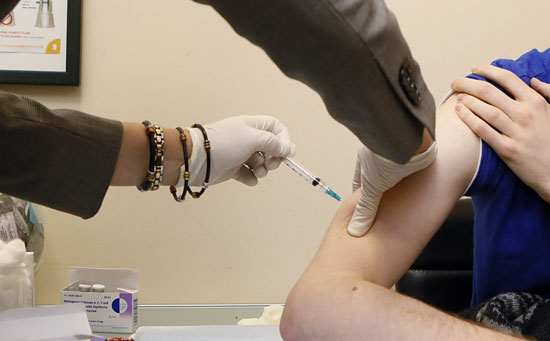
A possible cluster of meningitis cases has health officials urging vaccinations for those at high risk.
Three people have died and five others have fallen ill from meningitis in Los Angeles County since the beginning of 2014, and patterns in the cases have prompted public health officials to urge vaccinations for HIV positive men and those deemed to be at higher risk for contracting the disease.
Public health officials investigating the eight cases said that four of them involve men who had sex with other men. All three of the dead fall into that category; two of them were HIV positive and one was not.
Among the four cases in the possible cluster involving men who had sex with other men, other potential links include the fact that three of the men lived or socialized in West Hollywood or North Hollywood. The ages of the three who died are also similar—27 or 28, while the fourth, who survived, is 50.
A meningitis outbreak in New York last year prompted the health department there to urge men who had regular intimate contact with other men to be vaccinated against the disease. But Los Angeles County public health officials at the time said that was not necessary here, given a lack of connections between the 2013 cases it investigated.
This year, however, common factors among the cases are prompting a different recommendation from the Los Angeles County Department of Public Health, which consulted with the California Department of Public Health and the Centers for Disease Control and Prevention before issuing its alert.
“The facts are different,” said Dr. Jonathan E. Fielding, the county’s director of public health. “We didn’t have the same commonalities then as we do now.”
Although the risk is “very low for the general population,” county officials said that HIV positive men, as well as those who have close or intimate contact with multiple partners, find sex partners online, or share cigarettes and drugs, are at higher risk for the disease and should visit their health care provider to receive the vaccine. Those at high risk who don’t have insurance can get a free vaccination at a county facility.
The Los Angeles cases are all attributed to the strain of meningitis known as invasive meningococcal disease. It is a “sporadic and uncommon bacterial infection of the blood or the lining of the brain and spinal cord that can affect the entire body,” the Department of Public Health said a news release. “The infection can cause brain damage, hearing loss, and even death.”
It is not spread by casual contact, such as being in the same room with someone who is infected, and is less infectious than the flu. The bacteria responsible for the disease are spread by “very close exposure to sneezing and coughing or direct contact with saliva or nose mucus,” the public health statement said.
Meningitis can be treated with antibiotics but because it progresses quickly, “immediate diagnosis and treatment is imperative,” according to the news release. Symptoms include high fever, stiff neck and “altered mental status.”
Under CDC guidelines in place since 2005, all pre-teens and adolescents should receive the meningitis vaccine. A first injection is given at 10 to 12 years old, followed by a booster shot five years later in order to offer protection when the disease is most common, between the ages of 16 and 21. In addition, people who live in close quarters such as dormitories and jails are also considered high risk and advised to get vaccinated as a matter of course.
Still, Fielding said, even those who have been previously vaccinated should get another shot now if they fall into one of the current high risk groups, and if their vaccination was given more than five years ago.
Posted 4/2/14
The buses of summer
March 27, 2014

With millions of fans expected to pack Dodger Stadium, traffic planners are swinging for the fences.
Aram Sahakian doesn’t begrudge the rejuvenated Los Angeles Dodgers their success. But Blue Heaven can mean one helluva headache on his playing field—the city’s streets.
For Sahakian, who oversees special traffic operations for the Los Angeles Department of Transportation, it’s batter up every time there’s a major traffic event in the city. Now, with the L.A. Marathon and the Academy Awards behind him, he’s getting ready for the rush-hour throngs that will wend their way into Dodger Stadium beginning next week.
Although game-day traffic is always heavy around Chavez Ravine, it was particularly challenging last year. Attendance soared to its highest level in seven years—nearly a million above its 2011 low point, when San Francisco Giants fan Brian Stow was brutally beaten in a stadium parking lot in the season’s early weeks. With new owners and a powerhouse lineup that notched an epic winning streak, the Dodgers became one of the hottest tickets in town virtually overnight.
And this year could be even bigger. Sahakian says he’s been told that all but 15 of the team’s 81 home games already have sold at least 40,000 tickets, with tens of thousands more expected to be snapped up as the season progresses.
If baseball is a sport of statistics—batting averages, slugging percentages, RBIs, ERAs and the like—then so, too, is the traffic game. And Sahakian is a student of the stats. He knows, for example, that when the number of cars per hour, per lane, exceeds 1,200, “speed starts slowing down and you get into a gridlock, standstill type of situation.” That string of 40,000-ticket games for this season? He says they’ll easily push the streets beyond their free-flowing capacity, requiring a game plan every bit as nuanced as the one Dodgers skipper Don Mattingly will create for his crew.
To ease the coming crunch, Metro and city transportation officials are urging fans to save themselves some stress—and do their fellow motorists a favor—by ride-sharing or hopping aboard the Dodger Stadium Express bus, which leaves Union Station every 5 to 10 minutes, beginning 90 minutes before the game and continuing through the 3rd inning. The ride is free for ticket holders.
The express buses have been running for four seasons, but last year they scored their highest ridership yet, jumping from 136,000 passengers to 186,000. “Obviously,” Sahakian says, “we want to double that, if not triple it, this year.”
Last year, the route included for the first time a 1.5-mile dedicated bus lane along Sunset Boulevard. If more people continue to ride the express, Sahakian says, then traffic should ease for commuters struggling to get home along Sunset’s main lanes, which frequently were bumper to bumper from downtown to the stadium.
This year, Sahakian says, he also was determined to fix what he saw as a traffic and safety issue—the use of orange cones to keep vehicles out of the newly-designated Dodger express bus lane. Not only were buses “knocking cones all over the place,” he says, but transportation workers were “putting themselves in harm’s way” by setting them up with cars whizzing past. The cones also made it difficult, he says, for police to pull violators out of the bus lanes without a nearby side street or a break in the cone line.
So instead of the cones, Sahakian says, what he really wanted was a stripe on the pavement—“and I said I wanted it immediately.” And that, in turn, would end up giving L.A. cyclists a much-needed gift in the process.
Sahakian’s inquiries led to the discovery that the city’s bicycle master plan called for a lane to be painted along that same stretch of Sunset Boulevard at some point in the future—a time frame that was accelerated to create a combination year-round bus and bike lane during peak traffic hours.
The Dodger Stadium Express buses, however, are just one facet of a broad push to ease ballpark congestion. Among other things, a bus/bike lane has now also been painted on eastbound Sunset Boulevard to facilitate the post-game flow. What’s more, another stadium entrance, at Scott Street, will be opened to help reduce congestion, despite complaints from Echo Park residents who worry that the increased traffic will bring problems to their neighborhood.
Sahakian acknowledges that reopening the Scott Avenue gate “is a very sensitive issue.” But he insists that the city is working hard to avert problems with a plan to route vehicles around residential neighborhoods, increase the number of traffic control officers and create a locals-only preferential parking district.
But no matter how many traffic mitigation measures are undertaken, Sahakian says, there’s really nothing that can be done about the biggest one, a truism of L.A. fandom. “It’s not a secret that Angelenos,” he says knowingly, “don’t plan on getting to any sporting event early enough to avoid traffic.”
Posted 3/27/14
A Cinderella moment
March 27, 2014

Foster teen Lisa Slayton gets a makeover at last year's Glamour Gown extravaganza. “It was like a blessing,” she says. “Fabulous.”
It was an invitation that another teenager might have taken for granted. Alexx Solyom had been asked to her first winter formal, a masquerade ball in January at Pasadena’s posh Brookside Country Club. It was her senior year. The entire Class of 2014 would be there.
“But I’d been in foster care for about two and a half years,” the 17-year-old said, “and I was living from foster placement to foster placement. I couldn’t afford a dress—I was in a group home and there weren’t enough funds.”
Enter Pam Bingham, the court-appointed special advocate for Alexx, who knew about a program just for girls in her situation. Within days, the teenager was heading home with a free, brand new, floor-length dress.
Their fairy godmother? Glamour Gowns, a collaboration between CASA of Los Angeles and hundreds of volunteers—many veterans of show business—who believe that girls in the foster care system should, like any girl, get to feel like Cinderella on prom night.
“It was a black and white dress, a long dress with crystals going around the front,” says Alexx, recalling how Bingham had kept it at her house in San Gabriel until the big night so it wouldn’t end up being damaged or vandalized in the group home.
“I felt like a princess.”
Now in its 13th year, Glamour Gowns is gearing up this week for its largest-ever Cinderella moment, an event that on Saturday will offer a free prom outfit and day of beauty to some 500 high school girls in foster care.
Initially launched by a handful of volunteers with a few dozen cast-off dresses, Glamour Gowns has since outfitted thousands of foster girls for proms, homecoming dances and winter formals. Its signature spring event, geared to prom season, has become such an annual extravaganza that the Los Angeles Convention Center now houses it.
Sponsors include: Chinese Laundry, which donates new shoes; Jenette Bras, which custom-fits each girl with appropriate foundation garments, and D.J. Bronson Inc., a Commerce-based apparel manufacturer that over the past five years has donated more than 5,000 new dresses—and, occasionally, tuxes—to grateful foster girls.
Meanwhile, members of I.A.T.S.E. Motion Picture Costumers Local 705, Costume Designers Guild Local 892 and Theatrical Wardrobe Union Local 768 donate their time, as do hair and makeup stylists.
“I know to some people it might sound frivolous, but it absolutely isn’t,” says Jennifer Parker-Stanton, a former costumer for film and TV who has been involved in nearly every Glamour Gowns event since its founding.
More than 28,000 children are under the jurisdiction of the dependency court in Los Angeles County and more than 17,000 live in foster care. Often, Parker-Stanton says, their caretakers can’t—or choose not to—afford “non-essential” yet emotionally important items like prom regalia. As a result, she says, girls in foster care often simply opt out of key adolescent milestones rather than risk more disappointment in a life that often is already painful.
“This is about self-esteem,” says Parker-Stanton, whose costuming work ranged from the TV series “Nash Bridges” to the Academy Award-winning “Million Dollar Baby”.
“The first time I did this, the girl I was working with looked in the mirror and said, ‘People say I’m pretty, but until now, I never thought so.’ And I thought, ‘All this time that I’ve spent running around, shopping for famous people, when you can change a life with just one dress.’”
“It’s a social experience that the girls never forget,” agrees Michael Williams, a veteran social worker with the Department of Children and Family Services who has seen at least five of his young clients transformed by the program. “Most of them have never gotten this kind of attention before. “
Anissa McNeil, a Glamour Gowns Committee member and CASA of Los Angeles board member, says the teenagers are often most surprised to see that the outfits are department store-quality merchandise, not hand-me-downs or seconds.
“They’re like, ‘You mean I get to keep this?’ And we say yes. ‘And it’s all new?’ Yes,” McNeil laughs. “One girl made me pinky promise one year that everything was free.”
McNeil says, the group makes sure no one leaves empty-handed.
“Last year, we had a plus-size young lady and she didn’t see any dresses she liked that were the right size, and you could just see her thinking, ‘Nothing ever works for me.’ She was saying, ‘Thanks for inviting me, I’ll just take a purse if that’s okay,’ when the seamstresses came in and…made a gown for her, right there on the spot. When she tried it on, and it fit like a glove, the look on her face—well, there wasn’t a dry eye in the house.”
McNeil says the event is particularly rewarding for her because she, too, spent time in foster care. “My mother had a nervous breakdown, and my brother and I became homeless when I was six,” she remembers. “Our grandmother raised us and became our legal guardian.”
Today, McNeil has a doctorate and a practice as an educational consultant, but remembers keenly the challenges that face foster children. She had to work two jobs in high school to pay for her prom dress, she says, and because she is over six feet tall, it had to be specially tailored. Then, on the big night, her date failed to show up.
“Hey, that’s what happens when you go for a playboy,” she recalls laughing. “But as my brother and I tell people, if you can overcome being homeless, you can overcome anything. I was determined to go, and I went by myself—in a gown that was long and blue and elegant.”
Posted 3/27/14
A quicker ride over the hill
March 27, 2014

For the first time in two decades, Metro buses could be running on the 405 through the Sepulveda Pass.
When the $1 billion-plus 405 Project wraps up later this year, its new carpool lane will be the star attraction—and maybe not just for cars.
Metro is considering running a new express bus between the San Fernando Valley and the Westside, taking advantage of the new lane. It would be the first time in two decades that Metro buses have driven the 405 Freeway through the Sepulveda Pass.
The buses would offer a nonstop ride to UCLA and Westwood from Victory Boulevard and the Orange Line. They would also make stops along Van Nuys Boulevard to Nordhoff Street as far north as Panorama City.
Funding still must be identified, but, acting on a motion by Supervisor and Metro Director Zev Yaroslavsky, the agency’s board today directed staff to get moving on the studies, tests and analyses that would be required to launch the proposed new Line 588.
That includes looking at one potential major concern: whether the agency’s buses have the horsepower to maintain high speeds uphill in the fast lane. “The last thing anyone wants is to slow down traffic,” said Jon Hillmer, Metro’s director of service councils.
Express service in the carpool lanes was first suggested last fall by two Local Service Councils—appointed bodies that provide Metro with a regional perspective during the annual process of adjusting bus routes.
Metro’s staff then looked into the proposal, and the line has been taking shape ever since. Earlier this month, the Westside/Central and San Fernando Valley councils held public hearings on service changes and both recommended adding the express service, Hillmer said.
The public was supportive, too, with about 20 people speaking in favor of Line 588 at the Valley meeting.
“That usually doesn’t happen unless we are cancelling bus lines,” Hillmer said. “There is very broad support for this express bus.”
When Phase 2 of the Expo Line opens in 2016, the bus line would have another important connection; it would extend south to meet the light rail line, creating a new pathway to Santa Monica and, heading in the other direction, to downtown L.A.
Before any of that can happen, however, the bus line must be funded. Even after fares are collected, it will take at least $1.65 million to operate it—something the board could authorize as soon as April, when all of the proposed service changes come before it.
In the meantime, for Metro’s operations staff, the approval of Yaroslavsky’s motion means that Line 588 can be further studied and fine-tuned.
Because of increasing congestion, Metro’s buses haven’t taken the 405 freeway through the Sepulveda Pass for 20 years, Hillmer said. Metro Line 761 currently goes through the pass, but it travels on Sepulveda Boulevard, making several stops. (The Los Angeles Department of Transportation does have a bus that runs on the freeway, however—the Commuter Express Line 574, from Encino to LAX.)
Better transit connections between the Valley and the Westside have been on L.A.’s wish list for years. In 2008, voters approved $1 billion for a much larger undertaking that could include tunneling and rail, but that project is on hold as Metro seeks additional funding and project acceleration by partnering with private companies. In the meantime, Line 588 could start service as soon as the 405 lanes open this summer, Hillmer said.
Initially, the bus would be limited to weekday rush hours. But if enough people ride, Hillmer said, it could be expanded to include weekend service—opening a path to new destinations for entertainment, food and shopping for residents on both sides of the hill.
“They are huge economic engines,” Hillmer said of the Valley and Westside. “This opens up all kinds of wonderful opportunities.”
Posted 3/27/14
Where sex trafficking hits home
March 27, 2014
As the movement to combat the sexual trafficking of young people grows in California and across the country, Los Angeles County is mobilizing to address the problem where victims are all too frequently found: in foster care and group homes.
The Los Angeles County Board of Supervisors this week directed two county departments—Children and Family Services, along with Probation—to come back with recommendations on a plan to better train foster parents, group home operators and other caregivers, as well as county staff, to identify and respond to children and teens at risk of exploitation.
“Children in foster care and group homes are specifically targeted by pimps and gang members because the circumstances that caused them to be removed from their homes…often makes them especially vulnerable to sexual exploitation,” according to a motion by Supervisors Mark Ridley-Thomas and Don Knabe.
Rachel Thomas, a sex trafficking survivor who now works to educate people about the problem, told supervisors at their Tuesday meeting that it’s essential to teach caregivers and others to recognize the signals.
“The sad reality is that over half of all child exploitation victims are from the child welfare system,” Thomas said. “Most of them are not being kidnapped randomly. They’re being lured. There’s a grooming process, a recognizable honeymoon phase, with recognizable signs.”
Education, she said, “is the best inoculation.”
Philip Browning, director of the county Department of Children and Family Services, agreed.
“We have thousands of foster parents, relative caregivers, group home providers that every day come into contact with individuals who are involved in, or potentially could be involved in, commercial sex trafficking. Without education, I don’t think we would be able to do nearly what is needed,” Browning said.
The board directed the departments to come back with a report within 30 days. Along with the motion by Ridley-Thomas and Knabe, supervisors approved an amendment by Supervisor Zev Yaroslavsky to support state funding for efforts throughout California, including Los Angeles County.
The County Welfare Directors Association of California is pushing for a wide-scale initiative—incorporating training programs and services for child victims—that it hopes will ultimately be funded by the state. The organization estimates that running such a program in California would cost $40.6 million in the first year and $28.5 million annually after that.
Yaroslavsky said it will be essential for Los Angeles County to receive its share of state funds in order to enact effective programs here without cutting into other important services.
Posted 3/27/14
Lights out for Metro e-cigs
March 26, 2014
You’re not allowed to eat your lunch, sip a soda or fire up a smoke on Metro trains and buses—and now vaping, that popular and highly controversial new pastime, has joined the no-no list, too.
Metro’s Board of Directors approved a change in the agency’s Customer Code of Conduct to make it clear that vaping or lighting up cigarettes of any type—including e-cigarettes—is not permitted in its facilities, vehicles or within 20 feet of entrances. Vapers could be kicked off the train or bus and fined $75—although they may be able to reduce that or avoid it altogether by taking online “transit school” or performing community service.
A staff report, by Julie Chang, the principal hearing officer in Metro’s transit court, said the action is part of a national trend.
“Our research indicates that municipalities locally and across the nation are all restricting e-cigarettes in a manner consistent with other smoking activities, such as cigarettes and cigars,” the report said.
Those include the Los Angeles City Council, which recently voted to ban vaping in bars, nightclubs and restaurants. Restrictions are also in place in cities including Boston, Chicago and New York.
Metro decided to tackle the issue after members of the public and law enforcement agencies asked for a clarification of the agency’s e-cigarette policy. But even before an official code change was enacted, some riders have assumed that onboard vaping is verboten—and are calling out e-smokers accordingly.
“You can’t do that on the train,” one Red Line passenger angrily told another as the man exhaled vapor from his e-cigarette on a recent morning.
The vaping passenger insisted he was allowed to light up, but stopped smoking his e-cigarette anyway. The man who confronted him left the train before the encounter could escalate.
But the broader controversy around e-cigarettes will not be extinguished that quickly.
Companies marketing the new e-cigarettes, along with boutiques peddling vaping equipment and an array of tempting-sounding flavors of liquid inserts, contend that their product is safe—and, unlike regular cigarettes, poses no second-hand smoke threat.
Public health experts and elected officials are wary, however, and say more research is needed. They’re also concerned about the potential of a new generation getting hooked on nicotine—decades after America’s smoking wars seemed settled.
Poison control officials are also alarmed by the rapid spread of vaping, pointing to a growing number of incidents in which young children have fallen ill after accidentally ingesting nicotine-infused “e-liquids” in kid-friendly flavors like bubble gum and chocolate.
In addition, a recent study casts doubt on the claim, popular among e-cigarette advocates, that vaping is an effective way to quit smoking.
E-cigarettes and specialized pipes called vape pens use a battery-charged heating element to create vapor from liquids laced with nicotine or other chemicals. The U.S. Food and Drug Administration, which does not currently regulate the product except for e-cigs marketed for “therapeutic purposes,” says that consumers should be cautious until the risks are more fully known.
Posted 3/27/14
Freewheelin’ on World Water Day
March 20, 2014
This Saturday, Metabolic Studio dips its toes into World Water Day with installment No. 62 of its “100 Conversations About Water” series, which commemorates the 100th anniversary of the Los Angeles Aqueduct.
In this conversation, Lauren Bon will discuss her much-anticipated public artwork, Bending the River Back into the City. The sculpture will use an inflatable dam to divert water from the L.A. River, which will be lifted by a water wheel and treated for public use.
The dialogue with the artist takes place on March 22, from 10 a.m. to 1 p.m., at Lincoln Heights Senior Center, 2323 Workman Street in Los Angeles. Refreshments and a light lunch will be served. For reservations, email [email protected] or call (213) 926-4785.
Posted 3/20/14
Public health’s master of disaster
March 20, 2014
When Monday’s 4.4 earthquake struck Los Angeles, Stella Fogleman reacted like many parents—quickly stretching her arms over her two young children who had crawled into bed with her.
“I was like mama chicken with my wings,” Fogleman laughs.
Those wings stretch further than most. The 37-year-old was recently promoted to the position of interim director of the L.A. County Department of Public Health’s Emergency Preparedness and Response program.
She says that Monday’s 6:25 a.m. temblor—which shook people awake but didn’t cause serious damage—was a nice boost to her mission of getting people ready for a more serious disaster. Fogleman says her instinct to protect herself and those in her immediate area was the right one.
“It’s like the oxygen mask falling on an airplane,” she says. “You have to help yourself first, that way you will be able to help your community.”
Caring for communities has long been part of Fogleman’s job description. She got her start with the department in 2001 as a public health nurse, armed with master’s degrees in public health and nursing. Most of her time was spent monitoring tuberculosis cases to enforce strict protocols aimed at preventing the spread of the disease. From there, she moved to “toxics epidemiology,” shifting focus to diseases that result from toxic exposure.
Most recently, Fogleman led the development and implementation of the Community Disaster Resilience project—an alliance between the department, individual communities and emergency response agencies. The program uses public health department facilitators to educate community organizers on how to effectively prepare, respond and share knowledge. Fogleman hopes to keep that ball rolling in her new role.
“The key is collaboration,” she says. “You’re never as good by yourself as you are with others. Together, you have a broader set of resources.”
With only a few rumbles since the Northridge quake 20 years ago, Fogleman says it’s human nature to become complacent. But lack of preparation threatens to leave the region flat-footed when the next disaster strikes. According to public health studies, less than 20% of L.A. County households currently have earthquake kits. (The department’s website has a comprehensive checklist of what to include when creating your kit.)
But if fully stocking up seems a bit intimidating, Fogleman says a good first step would be to talk to neighbors about disaster strategies. Then, she says, you can begin to prepare and plan together.
It’s also important to secure homes by tethering tall furniture and securing books and glasses that could fly from shelves and cupboards, Fogleman says. People should know how to shut off gas and water in case of leaks, and families should go room-to-room to identify “safe places” to duck, cover and hang on—away from windows and under the cover of a sturdy table or desk, if possible. “That way you will subconsciously go to that spot,” Fogleman said.
Having the right supplies on hand can be a crucial. In the case of a widespread disaster, infrastructure may be damaged, cutting people off from the rest of the world. When an emergency response is spread over a large area, help might not come for days or even as long as two weeks, Fogleman says. Knowing first aid and CPR can help save lives if anyone is seriously injured.
As time goes on, people usually want to communicate with friends and family who live elsewhere. Having multiple ways of doing that—cell phones, internet and land lines—improves your chances of being heard. Fogleman says people can visit the Red Cross’s website to list themselves as “Safe and Well” so out-of-towners know they’re okay.
For those who want to go the extra mile, Fogleman recommends bereadyla.org, which has tools for preparing and community organizing. The Los Angeles County Sheriff’s Department provides Community Emergency Response Team training on how to respond to all kinds of disasters.
In the event of a damaging earthquake, the Department of Public Health would work in the background while first responders tackle the situation in the streets, Fogleman says. It’s her department’s responsibility to minimize a disaster’s impact over time, addressing such things as food-borne illnesses and checking buildings for safety. “If we’re doing our job well, no one hears about us,” she says.
However, that’s something she hopes to change by highlighting the positive things the department does to help people during an emergency. She wants to improve her program’s outreach by increasing the number of its publications and creating a newsletter. Getting the word out is one of the cheapest—and most effective—ways of preparing people for the worst, Fogleman says.
Despite the serious nature of her job, Fogleman approaches things with a positive attitude that comes, she says, from a genuine love of public service.
“There’s no question that what I do every day helps people,” she says. “There’s a real satisfaction with that.”
Posted 3/20/14





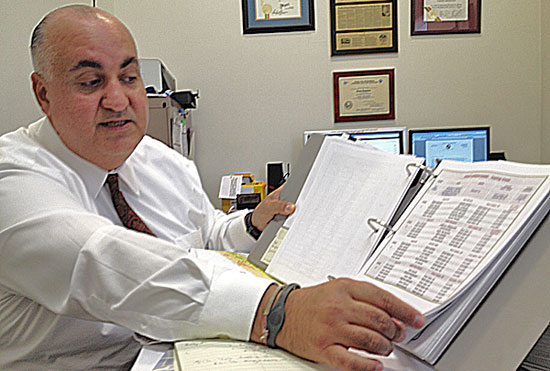


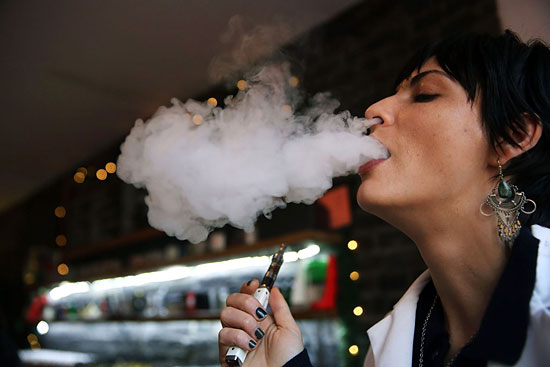
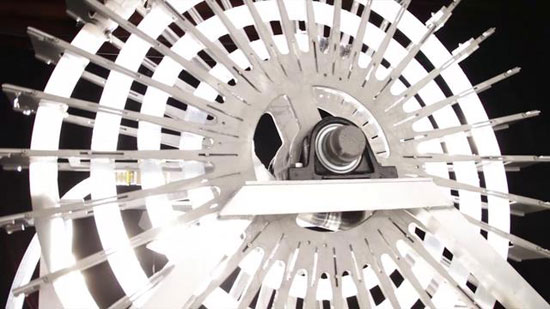
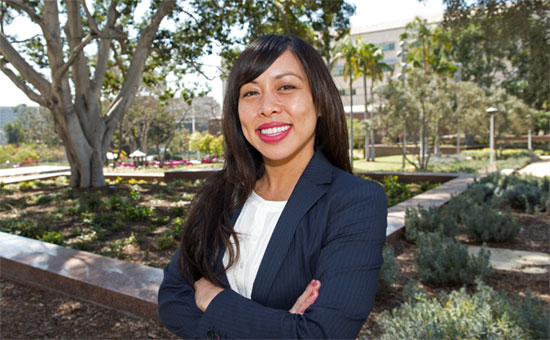





 Check for the latest closure information
Check for the latest closure information








